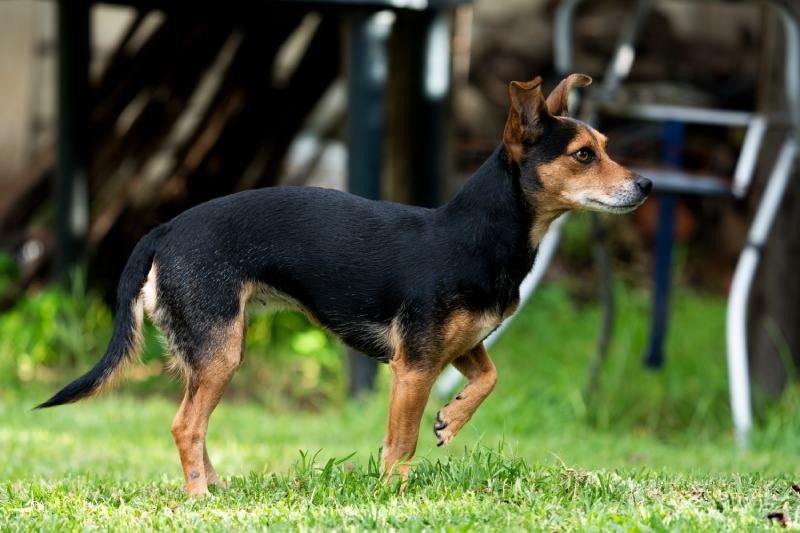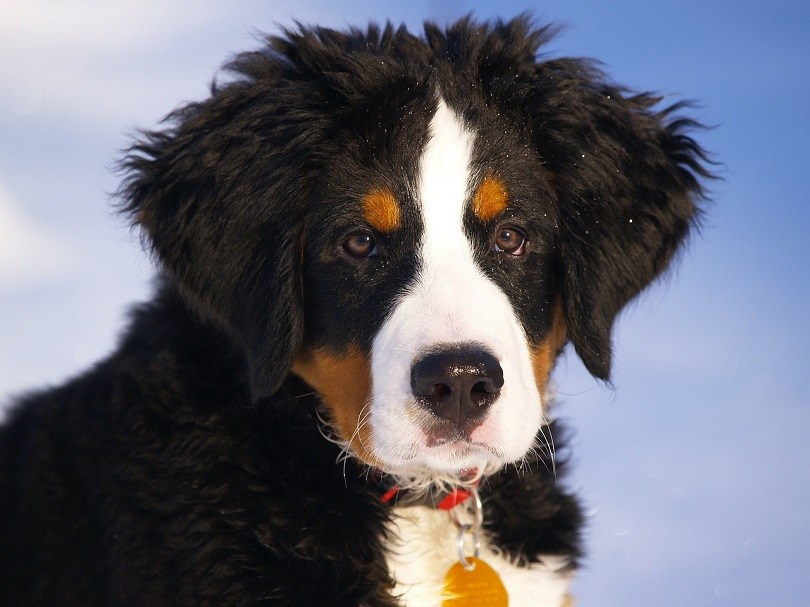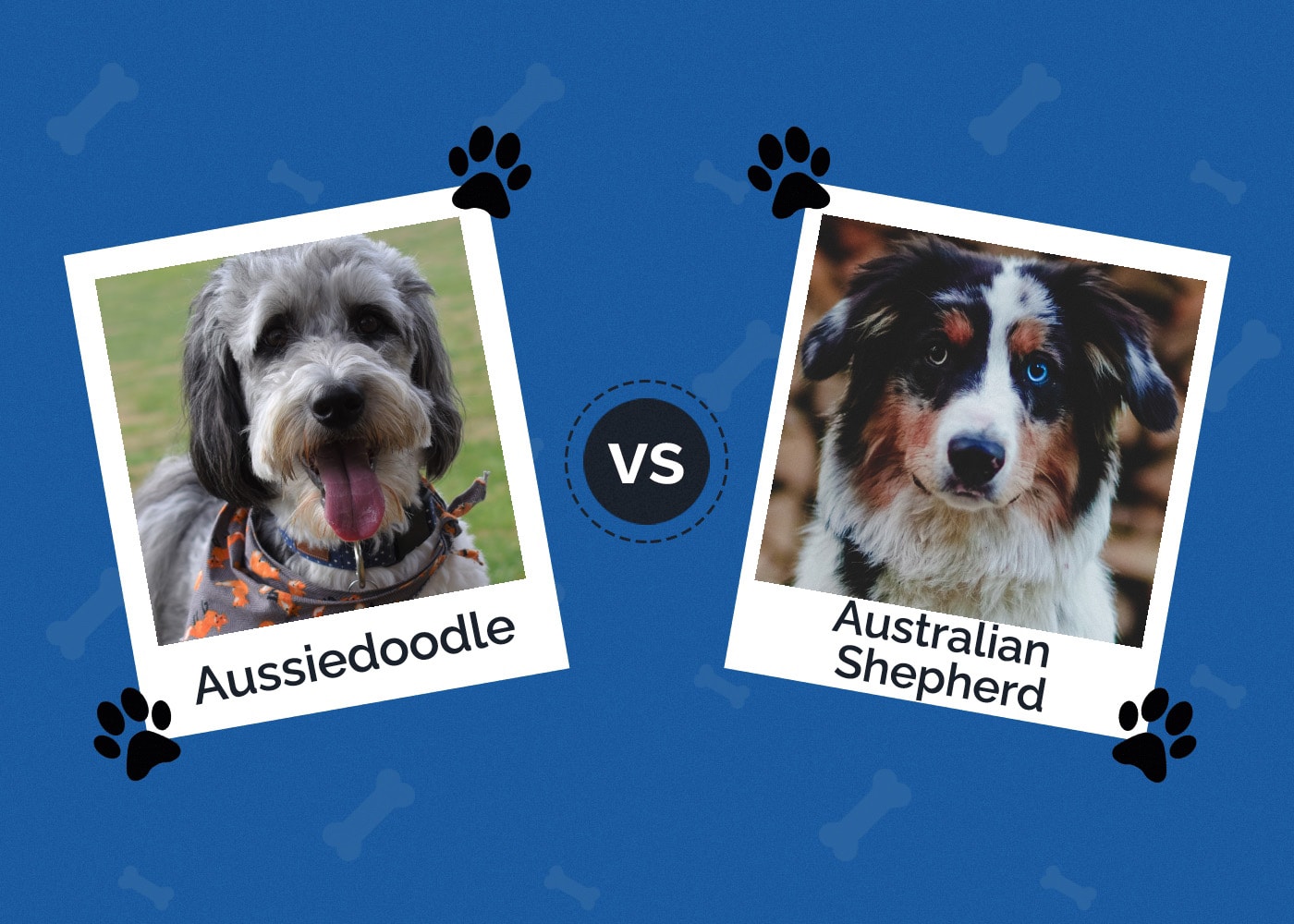Vizsla vs. Australian Shepherd: The Key Differences (With Pictures)
Updated on
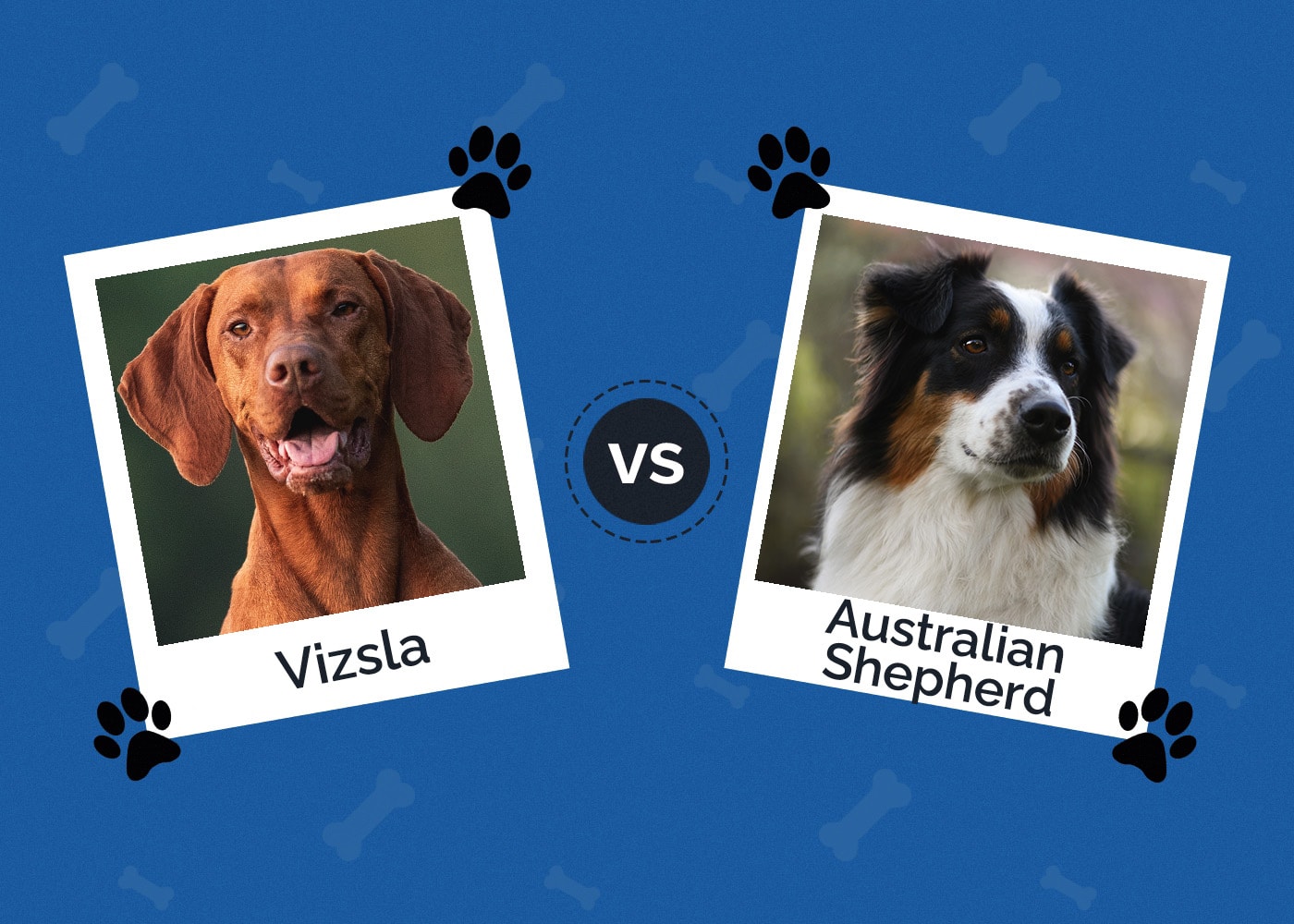
When choosing between the Australian Shepherd and the Vizsla, many potential pet owners have a hard time deciding. Both are pretty similar in height, weight, and even life expectancy, and they are both intelligent and easily trained.
However, there are also differences between the two animals that you should know about. The Vizsla isn’t the best dog to have around small pets, for example, and the Australian Shepherd is often very pet-friendly. If you’re torn between which dog is the right choice for you and your family, we’ll give you our thoughts on both in the guide below.
Visual Differences
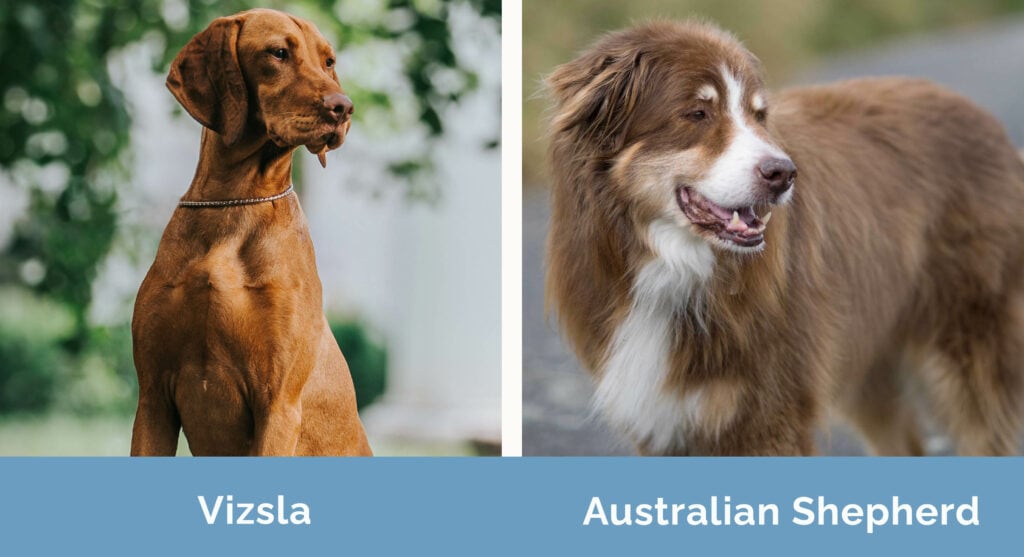
At a Glance
- Average height (adult): 23–27 inches
- Average weight (adult): 40-55 pounds
- Lifespan: 12-14 years
- Exercise: 2 hours a day
- Grooming needs: Moderate
- Family-friendly: Yes
- Other pet-friendly: With a lot of training
- Trainability: Intelligent, Excellent
- Average height (adult): 18–23 inches
- Average weight (adult): 40–65 pounds
- Lifespan: 12–14 years
- Exercise: 1 to 2 hours a day
- Grooming needs: Moderate
- Family-friendly: Yes
- Other pet-friendly: Often
- Trainability: Intelligent, Excellent
Vizsla Overview
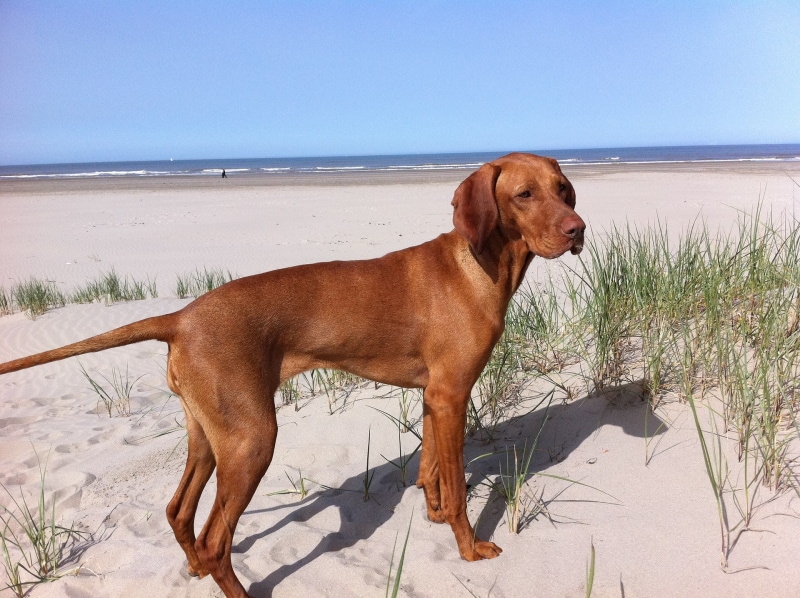
The Vizsla originated in 9th-century Hungary. The breed was once known as the Hungarian Point and was bred to be a pointer and retriever. Often owned by and working alongside hunters, the Vizsla was bred to create a dog perfect for hunting; this led to the dog’s strong prey drive that can make owning it with small pets a challenge.
The Vizsla’s skills were soon recognized by military leaders. The dogs participated in the Turkish Occupation during the 16th and 17th centuries, The Hungarian Civil War in the 19th century, and both World Wars.
The Vizsla is a medium-sized dog and the smallest Pointer breed currently living. Their short, coarse coat can be several shades of gold or red and can sometimes have white markings along their throat, paws, and chest. The breed has no undercoat but has floppy ears and brown, medium-sized eyes.
The Vizsla was first recognized in 1936 by the Fédération Cynologique Internationale. After the Second World War, the breed came to America, where it quickly gained popularity and was recognized by the American Kennel Club in 1960.
Personality / Character
Vizslas are very energetic and affectionate dogs. They were bred to work alongside humans, and that loyalty and desire to be close to their owners remained. The Vizsla is sometimes called the Velcro Vizsla due to its desire always to be wherever its owner is. Vizslas have been known to suffer from anxiety when separated from their owners for long stretches of time. All in all, the Vizsla is an intensely loyal dog that wants nothing more than to run around with its favorite person.
Training
The Vizsla, due to its original purpose as a pointer and retriever, responds well to training. As long as you use positive reinforcement and make sure not to yell at or punish your dog, they’ll take to training like a fish to water. However, they struggle with being trained to live with small animals like cats. Training a Vizsla to the level where it can live with a cat without you having to monitor them can take years.
Exercise
This easy training process helps when it comes to fulfilling your Vizsla’s exercise requirements. A quick walk won’t work for a Vizsla; they need about 2 hours of exercise daily, and much of it must be off-leash. Luckily due to their great trainability, this should be a problem. If your yard is unsuitable for long runs, you can take your pet to an off-leash dog park for exercise or visit an off-leash beach.
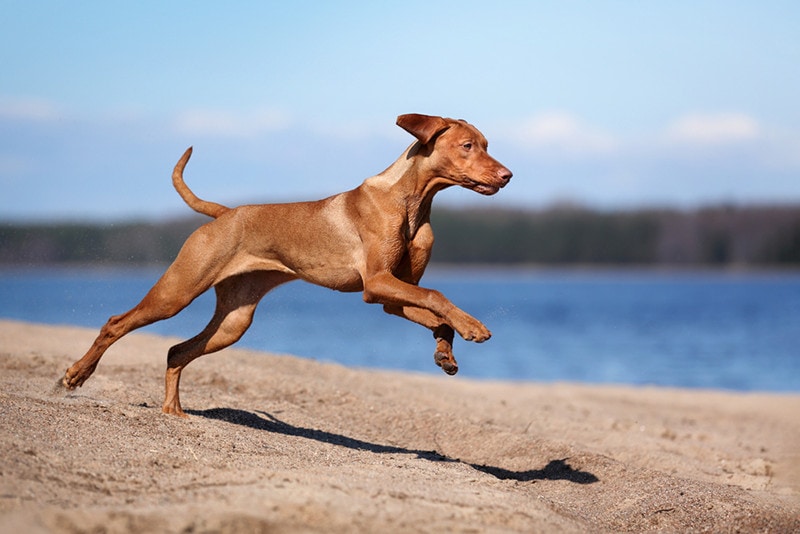
Suitable for:
The Vizsla is a breed that requires a great deal of attention and is unsuitable for an owner who has to be gone a lot; the last thing you want is to cause anxiety in your pet. They also adore running and aren’t suited to apartment life. If you can be home often and have the space for them to run, the Vizsla is a great pet to have.
If you already have small pets, such as cats, training your Vizsla to live with them will require a lot of work unless you already have a cat and are getting a Vizsla puppy. The Vizsla might not fit in if you have small pets, like gerbils or hamsters.
Australian Shepherd Overview
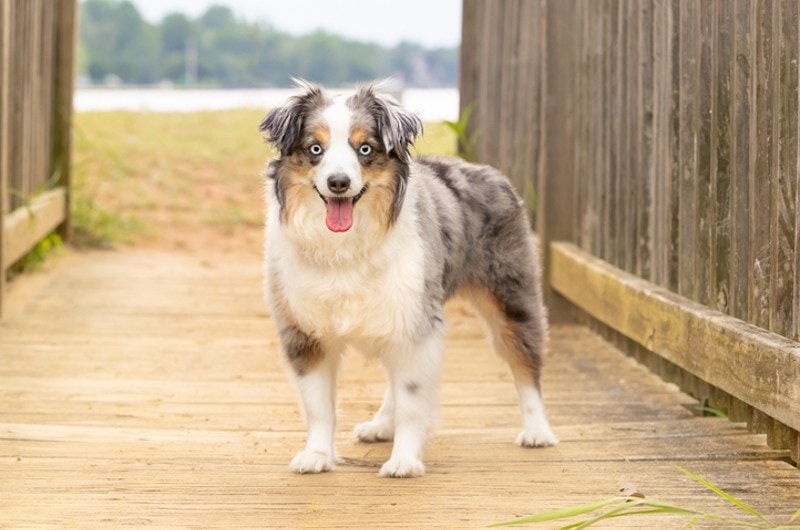
Interestingly, the Australian Shepherd Isn’t from Australia. The breed traces its roots back to the Basque Country, a region on the Iberian Peninsula within Spain. More confusingly, while the breed’s ancestors originated in the Basque Country, the Aussie was developed by American settlers living on the west coast.
In the 19th century, American settlers spread out across the country, and the best way to keep themselves fed was with sheep. These sheep were imported from a few different places but were primarily shipped to America from the land down under, and with them came working dogs to herd the sheep. Eventually, the dogs had changed so much that they were a different breed, the Australian Shepherd.
Personality / Character
Much like the Vizsla, the Australian Shepherd is a dog with boundless energy and is intensely loyal. The Aussie is a working dog, and because of that, it always wants to feel useful. It is a herding dog; this leads to it watching over and attempting to herd other animals and occasionally small children. This adorable quirk becomes less so when they attempt to herd cars, so the Aussies’ desire to work and feel useful makes it a dog you sometimes have to watch after.
Training
The Aussie is known for its high intelligence and is eager to please, which makes training them an easy task most of the time. Training and socialization are very important for an Australian Shepherd; without them, they can become territorial and overprotective.
When training, positive reinforcement is the best technique, making training more enjoyable for the dog and improving the bond between you. Unlike the Vizsla, the Aussie is more accepting of other pets, including cats.
Exercise
Australian Shepherds, much like Vizslas, need a few hours of exercise. Their origins as working dogs have given them large amounts of energy and stamina, so a walk around the block doesn’t do it for them. Running, hiking, and playing games with your Aussie are the best ways to get them physical exercise, but they also require mental workouts, which you can accomplish with command training.
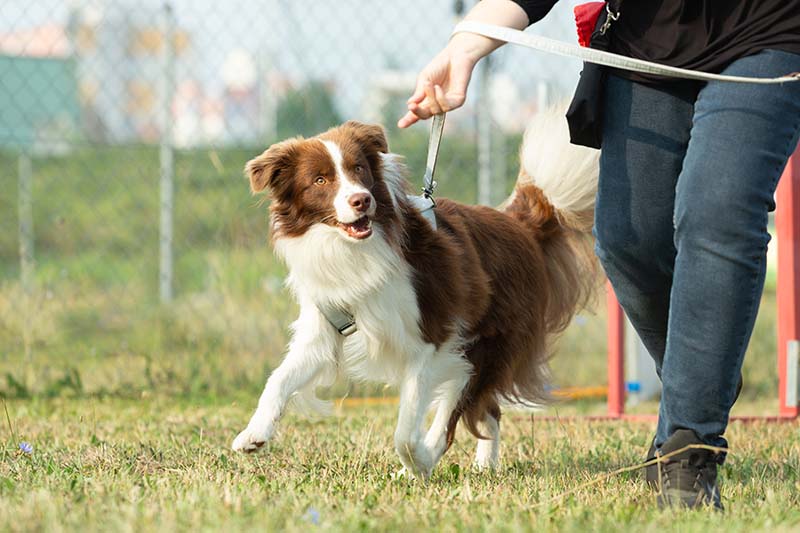
Suitable for:
The Australian Shepherd is a great family dog but will get along just as well with just one owner. The Aussie, however, is not made for apartment living; their high energy can lead to them becoming destructive if they don’t have enough space. If you live in an apartment or can’t find the time to take a dog out for a run, you should probably look for another pet.
Which Breed Is Right for You?
Choosing between the Vizsla and the Australian Shepherd isn’t an easy task. In most cases, it will come down to which dog you prefer. It is recommended that you not have the Vizsla around small pets or younger children unless you can firmly keep the dog in check. With the proper socialization, training, and handling, it is possible but challenging.
On the other hand, the Australian Shepherd makes an excellent pet for families with pets, but the dog will do just as well living with a couple or a single person. Both breeds are exceptional, but we hope that our information has helped you narrow down your decision.
See also:
- Vizsla vs. German Shorthaired Pointer: Learn to Know the Difference
- Vizsla vs Redbone Coonhound: The Key Differences (With Pictures)
Featured Image Credit: (L) Liudmila Bohush, Shutterstock | (R) Medenka Nera, Shutterstock



